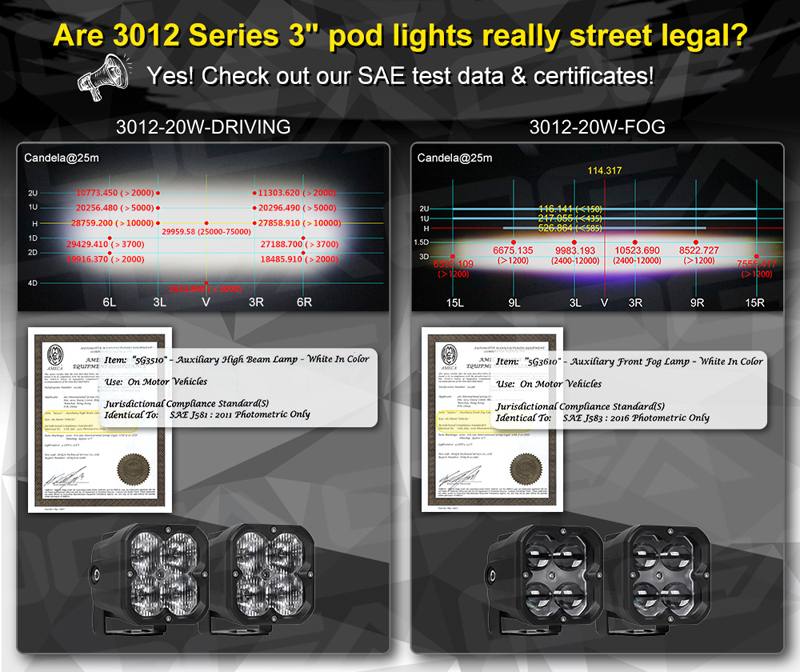For those dealing with automotive lights or auxiliary lighting, you probably know that optical components are crucial in a lamp, alongside the light source and cooling structure.
Without a light source, the lamp won't shine.
Without a cooling structure, the lamp might overheat.
Without optical components, light scatters everywhere, not being used well.
So, for car lamps or auxiliary lights, optical components are vital. In car lighting, good optical components are like the "eyes" of a vehicle, adjusting light to provide great illumination for drivers at night.
Optics is a complex field. In the development of our LED auxiliary light products, the costs of the research and production of optical components often constitute a significant proportion. Common optical components mainly include projector lenses and reflectors, with a few other types like diffusers, which won't be discussed in detail here.
The earlier part was to introduce the main topic of this article, where we'd like to discuss four characteristics of projector lenses with you.
1.Excellent Light Control capability, ideal for street-legal lights.
Comparing light control, reflectors use reflection, while lenses use refraction. Lenses has better performance in control. This is like a concert analogy: Reflectors act as traditional loudspeakers, enhancing sound through reflected waves, while projector lenses function like an advanced audio mixer, intricately adjusting various frequency bands to create a richer, clearer musical experience.
A reflector's minimum beam angle is around 15 degrees, while a lens achieves about 4 degrees. This illustrates that a projector lens has superior light control.
Taking the SAE standard as an example, which is one of the globally recognized strict standards, it requires auxiliary driving lights and auxiliary fog lights to meet specific brightness requirements in specific directions and angles. Lenses are particularly suited for such scenarios because they can simultaneously and precisely control light in different directions, much like a conductor skillfully guiding different instruments to produce harmonious music.
The image below shows our 3012 Series 3 Inch Pod Lights complying with SAE standards. You can see that SAE standards impose upper brightness limits for the central light and lower limits for the periphery. Lenses excel in precisely controlling light in different directions, primarily leveraging their curvature and surface features. While reflectors can also meet regulatory requirements, they come with some limitations and unavoidably produces some stray light.
2.Soft light pattern , with a natural transition of light.
In terms of light output, the reflector has a clear edge on the light spot, while the lens has a softer edge on the light spot. For example, when we compare OGA-W0120S-OL (reflector) with OGA-P18-40W-SPOT (lens), as shown in the image below, both clearly exhibit a central light. However, OGA-P18-40W-SPOT has a smaller central light, and its edge light spot is larger and softer, resulting in a more uniform overall light pattern transition.
In this aspect, no one outshines the other; it mainly depends on the user's preferences and application scenarios. For instance, choose a reflector for a clear transition between light and shadow. If you prefer a natural light transition, go for a lens.
3.High Light Utilization.
Some readers may wonder, "Are lens products similar among different brands?" Although they share the same lens concept, at least, our products differ from others on the market. We recently developed a high-low-beam driving light named MT32. Its high beam employs a dual lens structure, enhancing light efficiency and resulting in a brighter illumination.
In typical single-lens structures, a significant amount of light emitted from the LED source is blocked inside the lamp and doesn't refract through the lens. However, with a dual-lens design, more light is collected internally by the first small lens, refracted to the second larger lens, and then directed where needed. This is why our MT32 achieves higher light utilization.
4.Customizable features.
Many brands are promoting backlit features these days. This is something that cannot be achieved with reflectors; it requires lenses. Backlit LEDs are placed around the lens's rear perimeter, and they emit a soft, low-intensity light through the lens to create the backlight effect. Our exclusive Street Legal Series 3012 Pod lights and 56 Series Projector Lens Bar Lights offer backlit versions.
We hope this article helps you understand the characteristics of lenses. Feel free to inquire about the products mentioned. Wholesalers and importers are welcome to reach out anytime!





